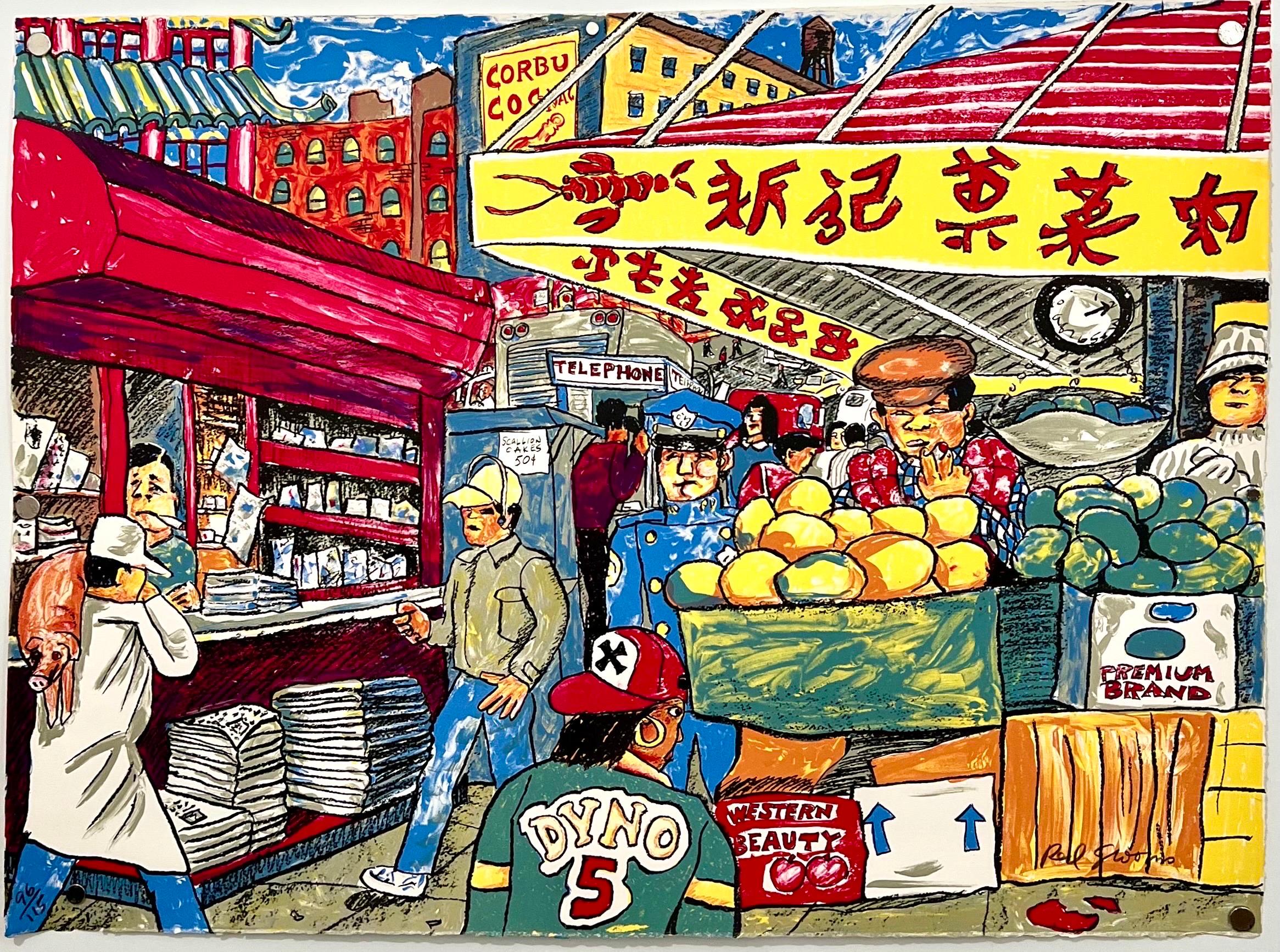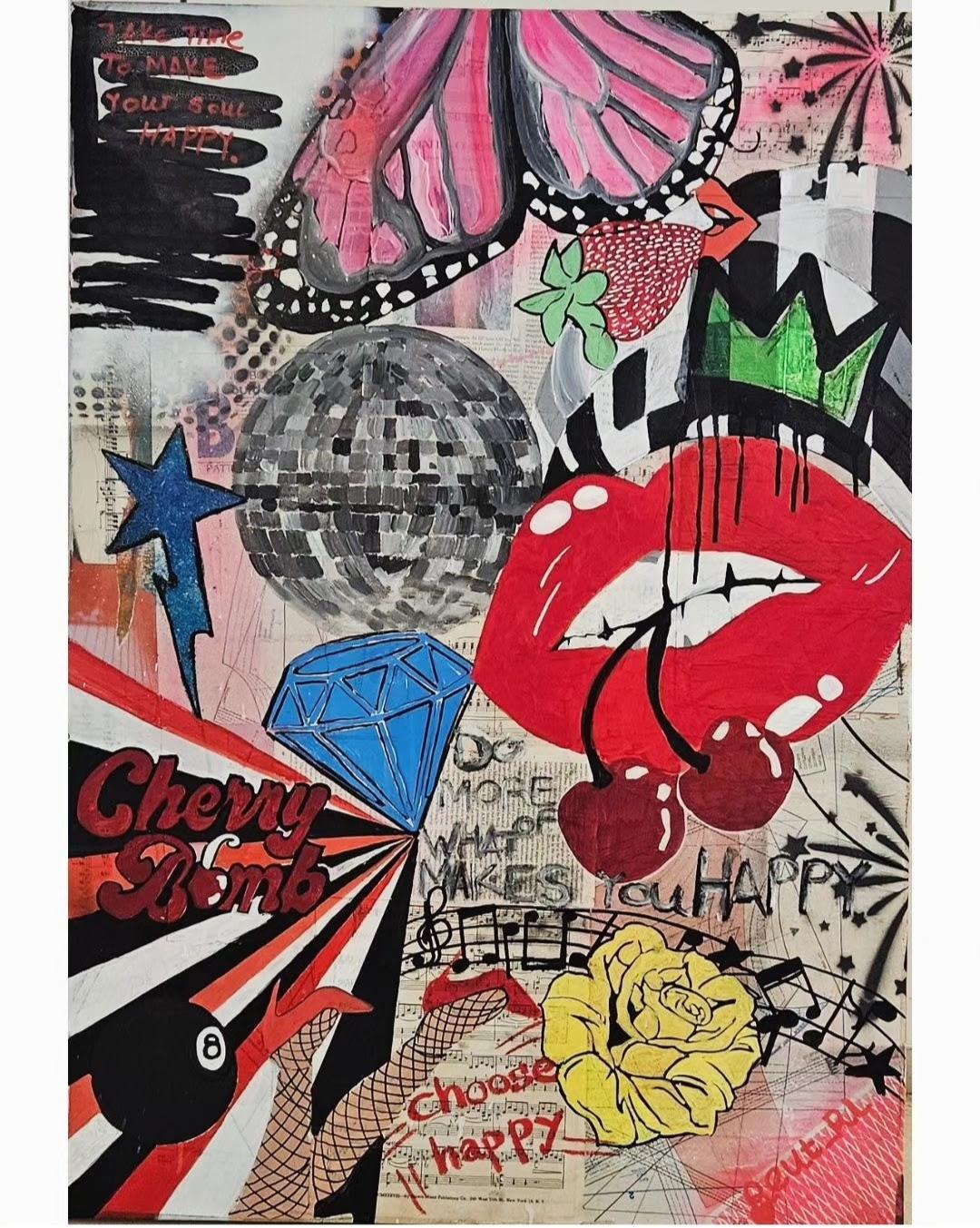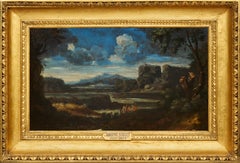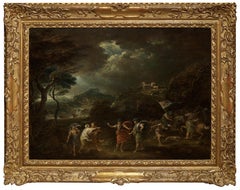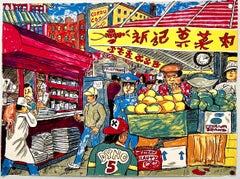Items Similar to Two military studies, a preparatory red chalk drawing by Jean-Baptiste Pater
Want more images or videos?
Request additional images or videos from the seller
1 of 9
Jean-Baptiste PaterTwo military studies, a preparatory red chalk drawing by Jean-Baptiste Pater1720-1730
1720-1730
About the Item
As Florence Ingersoll-Smouse wrote in 1921 in her book devoted to Jean-Baptiste Pater, "a painter of the Fête galante, Pater is interesting both by his intimacy with Watteau, to whom many of his works are still attributed, and by his own value as an artist.” This sanguine, full of life and spontaneity, is typical of the preparatory studies made by the painter to be used later in the composition of his paintings.
1. Jean-Baptiste Pater, pupil and disciple of Antoine Watteau
Antoine Pater, Jean-Baptiste's father, belonged to the petty bourgeoisie of Valenciennes where he worked as a merchant-sculptor. His brother Jacques was a local painter who was probably involved in his nephew's training. Born on December 29, 1695, Jean-Baptiste Pater was first trained with Jean-Baptiste Guider, a local painter whose death in 1711 was probably the reason for Jean-Baptiste’s departure alongside Watteau, who was visiting Valenciennes. Watteau's difficult character led to their separation in 1713.
Back in Valenciennes, Jean-Baptiste Pater encountered difficulties with the powerful Corporation of Saint-Luke (to which he refused to belong) which forced him to return to Paris in 1718. He reconciled with Watteau shortly before his death (on July 18th 1721), inherited the commissions that Watteau had been unable to fulfil and completed some of his paintings.
Pater was accepted by the Académie Royale in 1725 but did not produce his reception painting The soldier’s revels until three years later. Throughout his brief career (he died at the age of forty on July 25th 1736), he mainly had a clientele of amateurs and received only one royal commission, shortly before his death.
2. Description of the drawing and related artworks
Pater had adopted his master Watteau's method of composition. His study drawings were carefully glued in a notebook and were used to animate his compositions.
His paintings sometimes suffer from a somewhat artificial composition, since the figures seem to be pasted one next to the other. This point has also been made about Watteau’s.
The theme of military scenes (which was at the time included in the genre of Fêtes galantes!) was one of Pater’s favourite subjects. Together with the Bathing Women, it constitutes the most personal aspect of his art. It is also one of the themes that distinguishes him most from Watteau: unlike the military scenes in which Watteau expresses the soldiers’ distress, everything is cheerful with Pater. We are in a resolutely theatrical universe in which a strong feminine presence removes all gloom...
The two figures we are presenting were quickly sketched on what appears to be a note sent to the artist - traces of writing can be seen on the back of the sheet, which was unfortunately glued on heavy paper. They were reused in two of the painter's compositions, both of which depict The March of the Troops.
The figure on the left, which represents a soldier in three-quarter view, leaning slightly towards his long rifle with its butt on the ground, can be found in a painting at the Gemäldegalerie in Berlin.
The figure on the right of our sanguine, which represents a soldier clutching his rifle with his folded arms, evokes one of the figures in a painting at the Metropolitan Museum in New York.
3. Framing
This red chalk is framed in a large Louis XV style gilded frame.
Main bibliographic reference :
Florence Ingersoll-Smouse - Pater - Les Beaux-Arts Paris 1921
- Creator:Jean-Baptiste Pater (1695 - 1736, French)
- Creation Year:1720-1730
- Dimensions:Height: 6.19 in (15.73 cm)Width: 7 in (17.78 cm)
- Medium:
- Movement & Style:
- Period:1720-1729
- Condition:Red chalk on paper 6 3/16’’x 7’’ (157 x 178 mm) - Framed 16 2/3’’ x 17 5/8’’ (42.3 x 44.7 cm) Inscribed in brown ink in the left margin "Mr. pater peintre" Gilded frame in the Louis XV style.
- Gallery Location:PARIS, FR
- Reference Number:1stDibs: LU1568211290042
About the Seller
5.0
Vetted Professional Seller
Every seller passes strict standards for authenticity and reliability
Established in 2020
1stDibs seller since 2021
9 sales on 1stDibs
- ShippingRetrieving quote...Shipping from: PARIS, France
- Return Policy
Authenticity Guarantee
In the unlikely event there’s an issue with an item’s authenticity, contact us within 1 year for a full refund. DetailsMoney-Back Guarantee
If your item is not as described, is damaged in transit, or does not arrive, contact us within 7 days for a full refund. Details24-Hour Cancellation
You have a 24-hour grace period in which to reconsider your purchase, with no questions asked.Vetted Professional Sellers
Our world-class sellers must adhere to strict standards for service and quality, maintaining the integrity of our listings.Price-Match Guarantee
If you find that a seller listed the same item for a lower price elsewhere, we’ll match it.Trusted Global Delivery
Our best-in-class carrier network provides specialized shipping options worldwide, including custom delivery.More From This Seller
View AllYoung Man with a Sword, a Fist on his Hip, a drawing by Cornelis Saftleven
Located in PARIS, FR
Black chalk and white highlights on paper (originally washed in blue)
Monogrammed and dated 1630 on the right
This drawing, executed in black chalk and enhanced with white brushwor...
Category
1630s Old Masters Portrait Drawings and Watercolors
Materials
Paper, Chalk
Italian Landscape with Jack Players, a painting by Gaspard Dughet (1615 - 1675)
By Gaspard Dughet
Located in PARIS, FR
Here Gaspard Dughet offers us an idyllic vision of the Roman countryside. The stages follow one another in a perfectly structured composition, revealing here a lake, there travellers walking along, gradually leading our eye to the blue horizon. But behind its classical composition, this landscape is particularly interesting because of three anthropomorphic details that the artist has hidden, opening the way to a radically different interpretation...
1. Gaspard Dughet, a landscape artist in the light of Poussin
Gaspard Dughet was born on June 4th, 1615 in Rome where his father, of French origin, was a pastry cook. He was probably named Gaspard in honour of his godfather Baron Gaspard de Morant, who was, or may have been, his father's employer. His older sister Jeanne married the painter Nicolas Poussin (1594 - 1655) on September 1st, 1630. The young Gaspard was apprenticed with his brother-in-law at the beginning of 1631, which led his entourage to name him Gaspard Poussin. The first preserved works of the painter date from the years 1633-1634 and were painted in Poussin’s studio.
Around 1635, Gaspard Dughet became emancipated and began to frequent the Bamboccianti circle. In 1636, he became friends with the painter Jean Miel (1599 - 1656), but also with Pier Francesco Mola (1612 - 1666) and Pietro da Cortona (1596 - 1669).
This was also the time of his first trips throughout Italy. The painter, although of French origin, appears never to have visited France. In 1646 he settled permanently in Rome. A recognized painter with a solid book of orders, he remained faithful to landscape painting throughout his life, alternating between cabinet paintings and large decorative commissions, using both oil and fresco.
Nailed to his bed by rheumatic fever at the age of 58, he died on May 25, 1675.
2. Discovering an idealized landscape
Beyond a relatively dark foreground that takes us into the landscape, we discover a vast bluish horizon: a plateau surrounded by deep ravines advances to the right, overhanging an expanse of water that sparkles below. A road winds through a mountainous mass as if leading us to the fortress that crowns it; another town appears in the distance at the foot of three conical mountains.
The composition is rigorous, mineral, and structured by geometric volumes. The various stages in the landscape lead one to the next attracting the eye towards the horizon located in the middle of the canvas. The general impression is that of a welcoming and serene nature.
In many places the paint layer has shrunk, or become transparent, revealing the dark red preparation with which the canvas was covered and accentuating the contrasts.
Human presence is limited to three jack players, leaning against a mound in the foreground. Their long garments, which may evoke Roman togas, contribute to the timelessness of the scene.
Close examination of the canvas reveals two other travellers on the path winding between the rocks. Made tiny by the distance, their introduction in the middle register, typical of Dughet's art, lengthens the perspective.
While it is difficult to date the work of a painter who devoted his entire life to the representation of landscapes, it is certain that this painting is a work from his later years. The trees that occupied the foreground of his youthful compositions have been relegated to the sides, a stretch of water separates us from the arid mountains counterbalanced by two trees represented on the opposite bank. The introduction of this stretch of water in the middle of the landscape betrays the influence of the Bolognese and in particular of the Dominiquin (1581 - 1641)
A number of similarities with a drawing in the British Museum might suggest a date around 1656-1657, since, according to Marie-Nicole Boisclair , it has been compared with the Prado's Landscape with the Repentant Magdalene, painted at that period.
3. Three amazing anthropomorphic details
While some late Renaissance landscapes offer a radical double reading, allowing one to see both a face or a human body behind the representation of a landscape, it seems interesting to us to hypothesize that Gaspard Dughet had fun here by slipping in a few details that, taken in isolation, evoke human or animal figures.
We will give three examples, looking closely at a cloud, the trunk of a broken tree and the top of a cliff.
The main cloud could thus evoke a Christ-like face or that of an antique god...
Category
1650s Old Masters Landscape Paintings
Materials
Oil
Three studies executed in the Pitti Palace in 1761 by Jean-Honoré Fragonard
By Jean-Honoré Fragonard
Located in PARIS, FR
This brilliant study sheet, of which we present here a counterproof, is a souvenir of Fragonard's return journey from Italy. Between April and September 1761, he accompanied the abbot of Saint-Non on his way back to France. Three studies after the masters taken from the Pitti Palace’s gallery in Florence are gathered on this sheet. Although The Ecstasy of Saint Margaret...
Category
1760s Old Masters Figurative Drawings and Watercolors
Materials
Carbon Pencil
Macbeth and the Three Witches a Painting on Panel by Francesco Zuccarelli
By Francesco Zuccarelli
Located in PARIS, FR
This painting, created during Zuccarelli's stay in England, represents the decisive moment when Macbeth, together with Banquo, meets the three witches who announce that he will be Ki...
Category
1760s Old Masters Landscape Paintings
Materials
Oil, Wood Panel
The Adoration of the Magi, an early painting by Frans Francken II (1581 - 1682)
By Frans Francken II
Located in PARIS, FR
We would like to thank Dr. Ursula Härting who, after examining the work, confirmed the autograph nature of this painting by Frans Francken the Younger in a certificate issued on Dece...
Category
1610s Old Masters Figurative Paintings
Materials
Copper
Diana and Actaeon, a Mannerist painting after Joseph Heintz the Elder
Located in PARIS, FR
This painting seduced us with its rich colors. Depicting Diana and her companions surprised by Actaeon, it was inspired by an engraving by Aegidius Sadeler II after a painting by Jos...
Category
17th Century Old Masters Nude Paintings
Materials
Oil, Wood Panel
You May Also Like
Red Grooms Canal St Chinatown Manhattan New York City Lithograph Cartoon Pop Art
By Red Grooms
Located in Surfside, FL
Red Grooms (American, b. 1937).
Lithograph in colors on wove paper, 1993
"East of Canal Street, Corner of Canal."
Published by the Brooklyn Museum
(Reference: Red Grooms: The Graphic Work, Walter G. Knestrick. Harry Abrams Inc Publishers, New York, 2001. Cat. no 138 page 172,
Alexander & Cowles 138).
Downtown Manhattan, New York City Chinatown Street scene with various vendors.
Hand signed in black crayon and numbered on image at bottom edge.
"8/115 Red Grooms."
Dimensions 22" x 30"
Printer: Sharks Lithographs Ltd, Boulder, CO
Red Grooms (born Charles Rogers Grooms on June 7, 1937) is an American multimedia artist best known for his colorful pop-art constructions depicting frenetic scenes of modern urban life. Grooms was given the nickname "Red" by Dominic Falcone (of Provincetown's Sun Gallery) when he was starting out as a dishwasher at a restaurant in Provincetown and was studying with Hans Hofmann.
Grooms was born in Nashville, Tennessee during the middle of the Great Depression. Red Grooms came of age in the shadow of the Abstract Expressionists. He studied at the Art Institute of Chicago, then at Nashville's Peabody College. In 1956, Grooms moved to New York City, to enroll at the New School for Social Research. A year later, Grooms attended a summer session at the Hans Hofmann School of Fine Arts in Provincetown, Massachusetts. There he met experimental animation pioneer Yvonne Andersen, with whom he collaborated on several short films. Grooms follows in the tradition of William Hogarth and Honoré Daumier, who were canny commentators on the human condition. In 1969, Peter Schjeldahl compared Grooms to Marcel Duchamp, because both embodied "a movement of one man that is open to everybody."
In the spring of 1958, Grooms, Yvonne Andersen and Lester Johnson each painted twelve-foot by twelve-foot panels, which they erected with telephone poles on a parking lot adjacent an amusement park in Salisbury, MA. Inspired by artist-run spaces such as New York's Hansa Gallery and Phoenix, and Provincetown's Sun Gallery, Grooms and painter Jay Milder opened the City Gallery in Grooms' second-floor loft in the Flatiron District. When Phoenix refused to show Claes Oldenburg, Grooms and Milder dropped out of Phoenix and City Gallery presented Oldenberg's first New York exhibition, as well as that of Jim Dine. Other artists who showed at City Gallery include Stephen Durkee, Mimi Gross (daughter of Chaim Gross and Red Grooms wife), Bob Thompson, Lester Johnson, and Alex Katz. Grooms never developed the detached stance of such Pop Art practitioners as Andy Warhol, Roy Lichtenstein or James Rosenquist. Instead he painted his own life, and became, literally, an actor on the stage of life -- in this case the art-as-life "happenings" of the downtown New York scene. Inspired by George Méliès's 1902 film A Trip to the Moon...
Category
1990s Pop Art Figurative Paintings
Materials
Lithograph
Reut Harel: BLA BLA - Giclee print on canvas. 39.3/27.5”
Located in Tel Aviv, IL
Reut Harel is a Pop Art artist who works in Tel Aviv and creates colorful, optimistic, vibrant art that combines detailed elements and emotions. Her works are characterized by a tend...
Category
2010s Pop Art Figurative Paintings
Materials
Giclée
Reut Harel: Wonderwall - Giclee print on canvas. 39.3/27.5”
Located in Tel Aviv, IL
Reut Harel is a Pop Art artist who works in Tel Aviv and creates colorful, optimistic, vibrant art that combines detailed elements and emotions. Her works a...
Category
2010s Pop Art Figurative Paintings
Materials
Giclée
Reut Harel: Good Vibes - Giclee print on canvas. 39/47”
Located in Tel Aviv, IL
Reut Harel is a Pop Art artist who works in Tel Aviv and creates colorful, optimistic, vibrant art that combines detailed elements and emotions. Her works are characterized by a ten...
Category
2010s Pop Art Figurative Paintings
Materials
Giclée
Reut Harel: Choose Happy - Giclee print on canvas. 39.3/27.5”
Located in Tel Aviv, IL
Reut Harel is a Pop Art artist who works in Tel Aviv and creates colorful, optimistic, vibrant art that combines detailed elements and emotions. Her works are characterized by a tend...
Category
2010s Pop Art Figurative Paintings
Materials
Giclée
Reut Harel: WOW - Giclee print on canvas. 19.7/27.5”
Located in Tel Aviv, IL
Reut Harel is a Pop Art artist who works in Tel Aviv and creates colorful, optimistic, vibrant art that combines detailed elements and emotions. Her works a...
Category
2010s Pop Art Figurative Paintings
Materials
Giclée
Recently Viewed
View AllMore Ways To Browse
Jean Baptiste Jean
Foldable Military
Royal Royale
Galante Scene
Leroy Neiman Vegas
Lichtenstein Crak
Longhorn Steer Skull
Lord Leighton Photogravure
Lucky Number Of Dali
Luigi Rossini On Sale
Macintosh Andy Warhol
Magritte Victoire
Malcolm Myers
Malleus Maleficarum
Marc Chagall The Syrinx Fable
Marie Louise Ekman
Maud Hunt Squire
Michael Michaud
